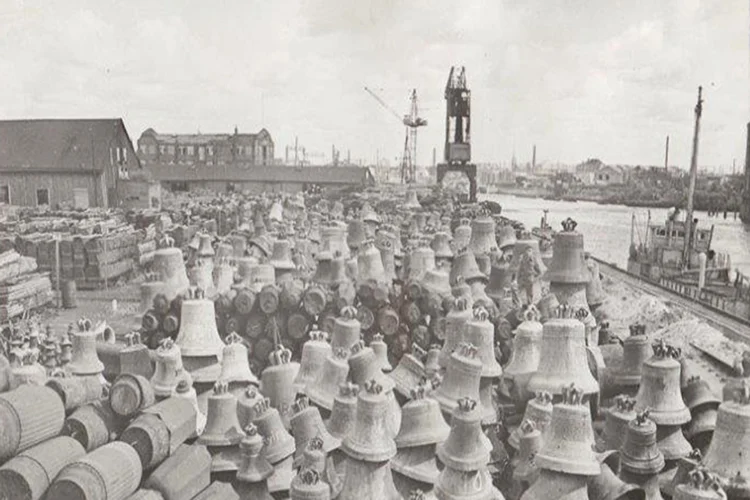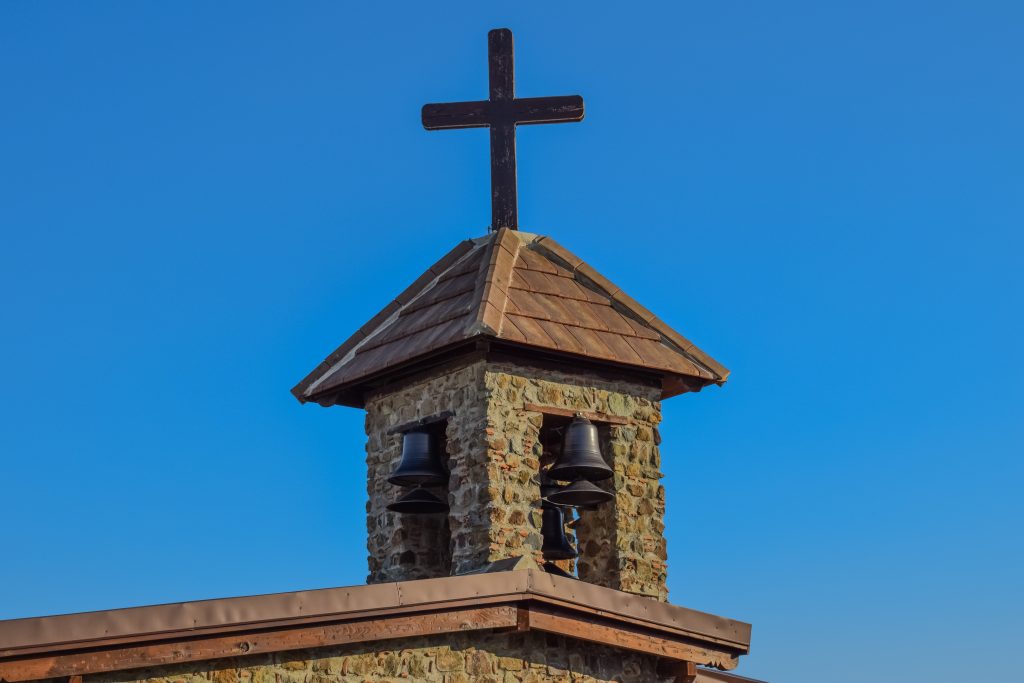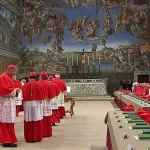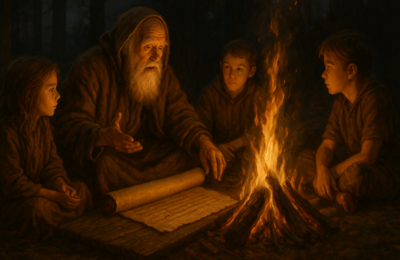A Call Back to Church Bells
The lights buzzed high above Olsen Field, casting a golden haze across the infield like a cathedral altar lit for evening alter call. The scoreboard flickered, the sound system hummed, and the low murmur of the crowd swelled as the Aggie pitcher toed the rubber. A faint scent of Rudy’s BBQ and hot dogs drifted through the air, mixing with the perfume of just-cut Bermuda grass. It was spring in College Station, and on nights like this, baseball wasn’t just a game—it was worship.
Children ran the concourses with gloves in hand, chasing foul balls and dreams. Dads stood shoulder to shoulder with sons, trading scouting tips like parables. The ballpark pulsed with rhythm—the scrape of cleats on clay, the sharp clap of a line drive, the thunder of 7,000 voices erupting from the stands like a revival tent choir.

In Section 203, the student section seethed with life. Chants rose and fell in perfect harmony, engineered chaos aimed at rattling the opposing pitcher. There were bubbles floating into the night sky, and homemade signs declaring, “Ball 5!” ready to fire up the next count. It was absurd. It was glorious. It was uniquely Aggie.
And then, just as the home team settled into a rhythm, it came: a low, slow, mournful whistle in the distance.
The train.
The crowd paused. Like clockwork, fans across the stands raised fingers in the air. One. Two. Three. Counting the engines.
It was a ritual. Ancient, in its own way. As if the train, not the umpire, had the final authority to mark sacred moments.
That whistle sliced through the night like a sermon interrupting sleep.
And that’s when it hit me.
The train still speaks. Still proclaims. Still cries out across the landscape.

But the church bell? The bell is silent.
You can drive past a hundred churches in a hundred towns and hear nothing but the hum of parking lot lights and the soft whoosh of automatic doors. The steeples are there. Some even have bells. But they’re relics now. Silent. Dormant. Mute.
“They don’t ring no church bells no more / But you still hear the train…”
—Stephen Wilson Jr., 2023
The saints have gone quiet. But why? And what has the silence cost us?
Later that night, I walked back to my car along the railroad tracks, each step crunching against gravel. The lights of Kyle Field glowed off to the right, a giant of concrete and tradition. The train had long passed, but its voice lingered.
And somewhere in the darkness, a deeper question echoed:
Where are the bells?
Let’s rewind the tape—all the way back to Eden.
Creation didn’t begin with paint or clay. It began with a voice. God spoke, and the universe obeyed. Light came out of darkness. Order out of chaos. Sound precedes substance in the biblical story.
And when God established worship through Moses, He did not leave sound to chance. Exodus 28:33–35 instructs that the High Priest’s robe should have alternating pomegranates and bells of gold along its hem:
“Its sound shall be heard when he goes in and out of the holy place before Yahweh, so that he will not die” (LSB).
Translation: if you go into the presence of God, you’d better make some holy noise. These bells weren’t just for flair; they were like theological doorbells—they announced to heaven that someone was entering with reverence.
Zechariah later tells us that in the Kingdom to come, even the bells on horses will be inscribed with “Holy to the LORD” (Zechariah 14:20). That’s not just poetry. It’s prophecy. It means that everyday noise becomes sacred when surrendered to God.
Fast-forward a few centuries, and bells had become central in Christian worship. According to tradition, Paulinus of Nolawas among the first to introduce bells in churches around 400 A.D. By the 6th century, they were in widespread use (Christianity.com, 2023).
But medieval believers didn’t stop at function. They developed elaborate rituals to consecrate church bells. Bells were named, anointed with oil, sprinkled with holy water, and blessed in ceremonies that resembled baptism (HistoryHit, 2023). Some were believed to cast out demons, chase away storms, and even heal the sick.
Admittedly, that’s a little more charismatic than most of us are used to. But the theological point remains: bells were not secular tools. They were sacred instruments.
And just like church organs and stained glass, they told a story without words:
• The funeral bell proclaimed that death was not the final word.
• The wedding bell celebrated covenant joy.
• The Angelus bell reminded the world of the incarnation—God became flesh.
• The call to prayer bell marked time as belonging to God.
A bell, in short, was the heartbeat of the church.
The Nazis understood the power of bells. And they feared it.

Between 1939 and 1945, Hitler’s regime confiscated over 45,000 church bells from Germany alone. The official reason? Bronze for war. But behind the practical was the ideological.
Church bells were reminders of a higher authority. They dared to say, in ringing tones, that there is a King not named Caesar or Chancellor. That Christ reigns.
To silence the bell was to silence resistance. And that was exactly the goal.
“Silencing the bells was a form of spiritual conquest. The Nazi goal was not merely political—it was theological” (Hockenos, 2022).
When you remove the bell, you muffle the conscience.
Ironically, we didn’t need a dictator to silence our bells.
In post-war America, we chose silence.
Churches fled city centers for suburbs. Architects swapped steeples for soundproof auditoriums. Bell towers were too expensive, too loud, too “old school.”
Add in noise ordinances, neighborhood complaints, and a dash of seeker sensitivity, and you’ve got the perfect recipe for a muted Church.
We traded sacred disruption for convenient decorum. We were so eager to be relevant that we forgot how to be resonant.
And so the bells fell silent.
Here’s the thing: bells still preach.
When a bell rings, it declares:
• Christ has conquered the grave.
• Time is not ours—it belongs to the Lord.
• The Church is not hidden; it is here.
A church bell is a sermon in soundwaves. It doesn’t argue. It doesn’t apologize. It proclaims.
Bells still do what they’ve always done: they call the prodigal home. They mark the hours of grace. They wake the dead-hearted. They rattle the gates of hell.
And whether made of bronze or digital bytes, the message is the same:
The Kingdom is near.
Back in College Station, the game ended. The crowd filed out. The train had long passed. The night grew still.
And as I walked back to my car along the edge of the railroad tracks, with the towering skeleton of Kyle Field off to my right, I listened.
The stars shimmered overhead, the gravel crunched beneath my feet, and the ghost of the train whistle still hung in the air.
But not a single bell.
And in that quiet moment, I couldn’t shake the question:
Where are the bells of the saints?
The world still hears the train.
But it needs to hear the saints.
Not just with bells—but with truth. With courage. With public proclamation. With the sound of the Gospel that echoes across neighborhoods and nations.
We may not all have bell towers, but we all have voices. We all have platforms. We all have something to ring.
Until the trumpet sounds,
Let the bells of the saints echo through the land.

References
Aggie Network. (2023). Bubbles & Ball 5: What it Means to be an Aggie Baseball Fan. https://www.aggienetwork.com/news/144844/bubbles-ball-5-mean-aandm-baseball-is-back/
Christianity.com. (2023). What is the Origin and Purpose of Church Bells? https://www.christianity.com/church/what-is-the-origin-and-purpose-of-church-bells.html
Gig ’Em Gazette. (2017). Texas A&M Baseball: Your Aggie Tradition Primer. https://gigemgazette.com/2017/02/17/texas-am-baseball-your-aggie-baseball-tradition-primer/
Clark, J. M. (2007). The Role of Church Bells in Medieval Society. The Catholic Historical Review, 93(2), 183–209.
Flanagan, S. (2021). The Bronze That Wept: Nazi Confiscation of Church Bells and Post-War Restoration. Journal of European History, 58(3), 315–336.
Hockenos, M. (2022). This Bell Tolls for God: Church Bells and Resistance in Nazi Germany. In Sacred Soundscapes (pp. 143–167). Cambridge University Press.
HistoryHit. (2023). 8 Facts About Church Bells. https://www.historyhit.com/facts-about-church-bells/
Stephen Wilson Jr. (2023). Church Bells and Train Whistles [Song]. Beelyrics.net. https://beelyrics.net/artist/2270511-stephen-wilson-jr/lyrics/10680992-church-bells-and-train-whistles
The Holy Bible. (2021). Legacy Standard Bible. The Lockman Foundation. https://read.lsbible.org/








